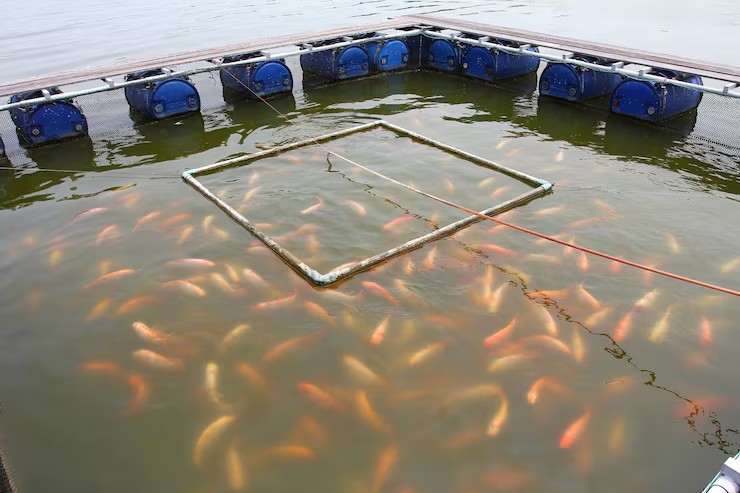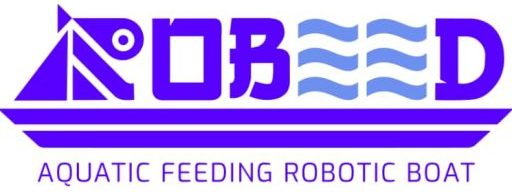
Transforming Aquaculture
Many fish farms are overfed, which drains money and kills valuable ecosystems. Up to half of aquaculture money goes for feed, but a lot of it ends up uneaten and leads to water pollution and worsened fish health. Livestock farmers find it challenging every day to give animals the right amount of food; if they feed them too much, it leads to tossing away the extra, while giving them too little can stall the animals’ development. Robeed’s robot for aquaculture provides a superior method, employing AI to improve the way food is given to fish. This blog post looks at how Robeed addresses overfeeding, saving expenses, and improving fish farming sustainability.
The Challenges of Traditional Aquaculture Feeding
This is where we are going to explore some of the key issues that fish farms are facing that have to do with straight feeding practices. Whether through excessive feeding and firm timetables or excessive labor costs and waste, these ways are expensive as well as unproductive. We will look at how such problems affect fish health and farm profitability to pave the way to smarter, automated techniques.
The Hidden Costs of Overfeeding
What most farmers don’t notice is how overfeeding costs them more. Uneaten feed that sinks in the water releases substances that can decrease water quality, reduce the oxygen lower, and cause stress to the fish living in it. Because food costs are so high and make up half of what must be paid, inefficiencies can easily reduce profits. Manually feeding pets causes issues, as their food does not get given regularly, making them less healthy and leading to more wasted food. Robeed’s solutions provide a savvier way to handle these problems.
Inconsistent Feeding Schedules Harm Fish Health
Fish may become unhealthy and grow slowly when their diet is irregular. If fish are fed out of sync, they can end up with nutrient problems that cause them to grow irregularly and experience lowered protection. Improper feeding can increase animals’ chances of getting diseased, leading to lower efficiency on the farm. Manual feeding is not reliable for maintaining constant schedules, particularly in large ponds of big size. Because of these problems, fish quality falls, and the demand for the product goes down, making automated precision more necessary.
Labor-Intensive Feeding Drains Resources
Feeding fish takes physical effort as workers are required to spread feed across big ponds and tanks. Because of this, the daily operations cost more, and people can give pets either too much or too little food. The task of handling a team of workers is a big responsibility for large farms, taking away funds that could be used elsewhere. Such methods find it hard to keep up with a farm’s expansion plans. Using mostly manual work shows that traditional ways are not efficient in the modern industry.
Disease Risks from Manual Interaction
When workers handle water to feed fish by hand, they are more likely to infect their fish. Having insufficient biosecurity protection can allow hazardous pathogens into the farm, which may harm the fish and the industry. Traditional approaches can’t constantly check health data, which can lead to more problems. Therefore, it is important to have technology that takes control from humans while feeding without too much involvement.
Scalability Challenges in Traditional Systems
There are many obstacles involved in increasing aquaculture using manual feeding. Expanding farms means providing the same amount of food to all animals won’t work well, which causes problems. Because these methods rely only on experience, it is not easy to find the best diet for all kinds of feeders or different ponds. At the same time, sustainable growth is emphasized in modern aquaculture since it must provide enough food for the world, as seen in Fisheries and Oceans Canada’s work.
Precision Feeding with RFID Technology
The robot used by Robeed is equipped with RFID to deliver feed precisely to the animals’ spots. Because robots can manage their motions very well, feeding is targeted to specific areas, and the amount of waste is reduced. Sensors work together to detect fish and perform the feed distribution only in the important areas. The accurate measurements monitor and lower food wastage, thereby reducing expenses and damage to nature.
Robeed’s Smart Solution to Feeding Challenges
Robeeed Solutions produces an automatic fish feeding robot that addresses the key challenges of traditional fish farmers. Its SmartFeed Control uses artificial intelligence, which adjusts to fish feeding requirements, reducing food waste by feeding fish more consistently and precisely than manual feeders. It also provides the correct food quantities at a time using RFID, which does not pollute or cause other waste. Added to that, Robeed is solar-powered, operates using a mobile application, saves a lot of money, and makes the work easier in operation to farm operators, hence increasing productivity and reducing the carbon footprint in a more effective and efficient fish farming system.
Closing Thoughts
Limitations in traditional aquaculture feeding due to overfeeding, uneven schedules, lots of labor, the risk of diseases, and being limited in scale are challenges for improvement. Innovative technologies present us with a solution by helping us save time and the environment. Do you want to find out how to deal with these barriers? Check out robeed.com to explore ways that fish farming is shifting right now.
Conclusion
Old ways of handling animal feeds are no longer enough when the industry aims for sustainable and financially strong operations. When addressing feeding problems, irregular schedules, and inefficiency, aquaculture can develop to fit world needs and protect the environment. Robeed strives to make this change happen, equipping farmers with tools that will help them succeed in the future. If we join forces, we can make fish farming better for our environment.

